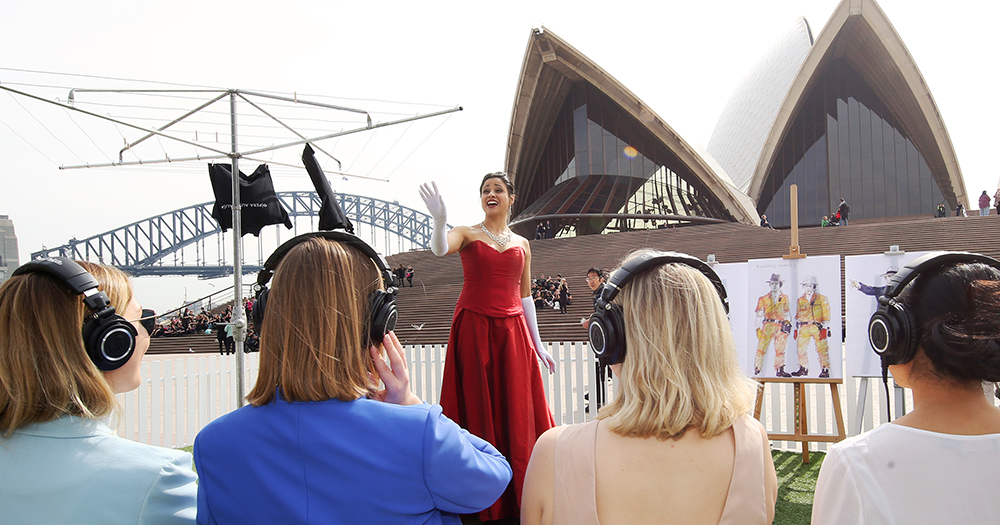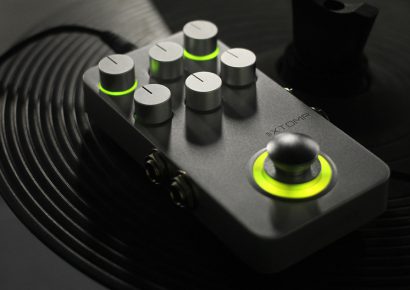An optimal audio setup is essential to ensure The Eighth Wonder isn’t just a functional experiment, but a truly unique event. Norwest Productions are responsible for the sound design, which involves greater detail than what you’d find at a traditional opera performance within a controlled theatre setting. Norwest have supplied audio for the majority of Opera Australia’s previous outside operas, including five hugely successful years of Opera on the Harbour. The silent opera will implement the same control system and miking techniques as Opera on the Harbour, though in this instance the orchestra and the chorus will actually be playing inside the Opera House.
“They’re in a venue called the Studio inside the Opera House,” says Norwest’s Adrian Riddell. “There’s a large input list for the orchestra. There’s 68 individual orchestra lines coming back through most front of house and monitors. Everything is individually miked. There’s close mics and some ambient microphones as well.”
The Opera House steps will used as the stage. You obviously don’t want the cast members to be worried about being able to hear the orchestra or hear themselves singing – rather, they need to be completely comfortable with the sound arrangement so that they can perform the opera to their full potential.
“We have 16 principal speaking and singing cast members and each one of those has a main and a backup microphone that’s transmitted wirelessly,” Riddell says. “We’ve now done five years of outdoor opera where the opera singers have to wear in-ear monitors. The first Opera on the Harbour was the first time any of these singers had worn in-ear monitors and they were completely freaked out by it initially. We’ve done a lot of work with the singers and getting them accustomed to knowing they’re not just getting a generic mix. They’ve all got their own mix, so they can have as much strings or as much glockenspiel as they want for any particular scene.”
Wireless technology will also be utilised so that the 3000 audience members can listen to the opera through high-fidelity RE700 Audio-Technica headphones. The aim is to envelop listeners in sound, and if all goes according to plan, The Eighth Wonder should provide a more defined and dynamic sonic experience than any opera you’ve ever attended. However, when the concept was initially raised, it was in response to some practical restrictions affecting outdoor performances at the Opera House.
“The opera house forecourt in recent times has come under a lot of public criticism for their amplified music,” Riddell says. “They recently had a series of concerts down there and there were a lot of complaints from the residents, which then forced the events to turn their systems down, which made all of the punters very unhappy. There was unhappiness on both sides.
“We knew this had come up and they said to us, ‘We want to put this opera on the steps.’ Our design had the PA pointing directly at the [residents], so Tony [David Cray, sound designer/mix engineer] did some tests. We just weren’t going to get the level that we were after and what was going to make our bosses at Opera Australia happy. We gave them a demonstration of what the level would be with these restrictions and it just wasn’t loud enough.
“Then there was just this flippant comment, ‘Why don’t we have a silent opera?’ And I give credit to Opera Australia and [Artistic Director] Lyndon Terracini; they’re quite open to stepping outside the box with their productions. When this came about, they thought it was fantastic.”
Not only does the silent opera guarantee they won’t breach the noise restrictions; it also lets every audience member control their own volume level. “Everyone has a different taste on how soft or how loud they like to sit and listen to music. So why not give each individual person that ability to make it louder or softer to their own taste? So we killed two problems with the one stone.”
In view of these two advantages, the silent opera doesn’t seem like a compromise whatsoever. The Eighth Wonder is something of a celebration of the Sydney Opera House – it focuses on the tumultuous circumstances that surrounded the building’s construction, illustrating the enormous hurdles that needed to be overcome. The Opera House is an innovative structure and a haven of world class performing art. By embracing advanced sound design plus similar technologies in staging, projection, lighting and 3D printing, The Eighth Wonder will be a demonstration of ongoing technological and artistic innovation.
“There’s projection, there’s inflatable pieces in it. You don’t normally get that in other operas. When we first thought of the idea, Tony and I went and did a bit of research and we can’t find anywhere else in the world that’s had the scale of this kind of silent event. There have been plenty of smaller silent disco type things, but not an opera.”
The Eighth Wonder will take place at the Forecourt, Sydney Opera House from October 28 – November 5, for more information, head here. For more details on the RE700 Audio-Technica headphones, head to audio-technica.com.au.

